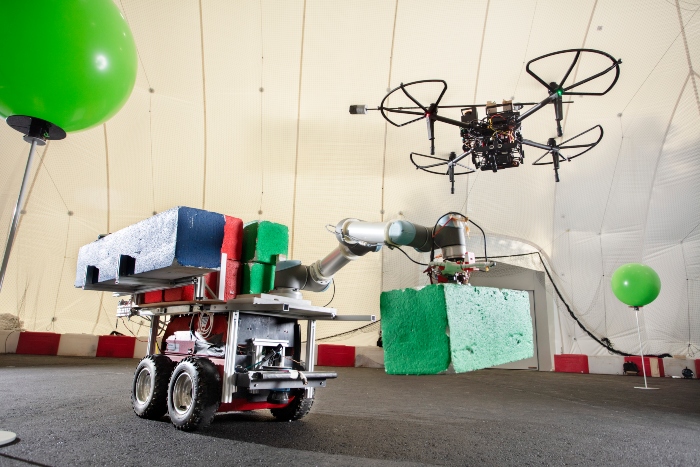The Centre for Collaborative Autonomous Systems represents the latest research in highly automated and intelligent systems and is linked to one of the world’s largest test facilities for robots and drones.
DTU has just opened its Centre for Collaborative Autonomous Systems, CCAS. Collaborative autonomous systems is a new area of research focused on developing highly automated and intelligent systems. These are systems that can adapt to the environment and perform complex tasks partly or entirely without human assistance, either in cooperation with other machines or with humans. Well-known examples of autonomous systems are self-driving cars or drones used in inspection tasks.
The new research area includes elements from many different scientific fields such as artificial intelligence, automation and robot technology, image recognition, big data analysis, technology management, and remote control.
“We’re proud to be behind the first Danish centre for future research and development of autonomous systems. Autonomous systems is a research area that cuts across traditional disciplines and a good example of how to harness technologies for the benefit of people, and thereby contribute to making our lives easier and better in the future,” says DTU President Anders Bjarklev.
Unique test facility
In addition to the new research centre, DTU also opened a newly built large test hall, the Autonomous Systems Test Arena (ASTA), with facilities for testing robotic and drone technology. In the 1,000 m2 hall, which is the only one in Europe of its kind, researchers, students, and companies will in future be able to test new solutions for autonomous systems, on the ground, in the air, and in water.
The inauguration of the Centre for Collaborative Autonomous Systems featured demonstrations of autonomous systems in the new test facility. These include an exoskeleton for rehabilitating people with reduced physical functions, an autonomous underwater vehicle that can map the seabed, and a collaboration between a mobile robot and a drone to build a wall. Some of the university’s current research projects were also presented, including the Shipping Lab project, which aims to make ships autonomous so that manoeuvring and steering of vessels can be done partly or completely without manning on the bridge.
“The vision for the new centre is to develop autonomous technologies and solutions that can help improve our lives. We are already seeing great advantages in the field of transport. For example, autonomous buses and harbour buses can increase the volume and use of public transport, significantly improving connections between cities and their catchment areas,” says Roberto Galeazzi, Head of Centre for Collaborative Autonomous Systems.

Autonomous systems also play a key role in the development of smart energy systems, enabling individual sub-elements, such as a heat pump, to assess for themselves when the network needs to be supplied with energy. Or by allowing people with disabilities to take a more active role in their professional and social lives.
“Small and medium-sized enterprises have already embraced the first wave of digitalisation and robotization and used it to streamline their production. Autonomous systems will boost this development and lead us into the full realization of Industry 4.0,” says Roberto Galeazzi.
Much of the research and development of the Centre for Collaborative Autonomous Systems will also take place in cooperation with both national and foreign companies that need increased automation of their products and services.